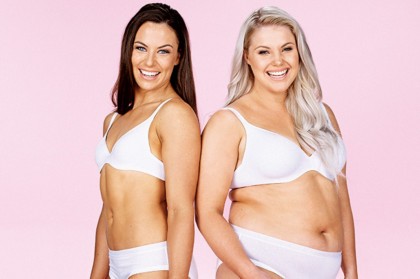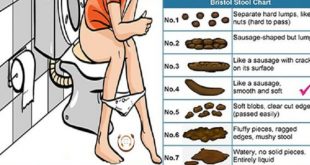
In 1969, The Australian Women’s Weekly published a story about Nancy Richardson, under the headline “Real Fatty”. Nancy described the moment she realised she needed to lose weight. She was visiting her parents and noticed that her father was avoiding her. “Finally I asked what was wrong,” she told the magazine in an interview promoting the first Weight Watchers branch in Australia. “‘Frankly’, he told me, ‘you’re just so fat I cannot stand to look at you’.” She was 73 kilos. Fast forward almost 50 years, and Nancy would be normal.
Since the 1960s, the average Australian woman has grown less than two centimetres in height but she has put on almost 7.3 kilos, to tip the scales at 71.1kg. The average man has put on more than 12 kilos since 1960.
What has happened in the past five decades and is this growth a trend we need to worry about? Most of us would be aware that Australia is in the midst of an obesity crisis and that the majority of adults are overweight or obese.
Food has become more plentiful, and cheaper. Our lifestyles have certainly changed and much has improved. We smoke less, live longer, the medical advances have been astronomical and most of us are aware of what constitutes a healthy lifestyle.
But there’s no denying that society has developed a weight problem and the consequences are starting to show themselves in the form of more chronic and potentially killer illnesses such as type-2 diabetes and heart disease.
Aside from these very serious physiological problems, there’s another worry about slowly increasing girths – that it’s becoming normal; that this problem runs even deeper, into collective psychology. Slowly – so slowly we haven’t noticed – our perception of what’s normal has changed, from the size of people’s bodies to the volume of people’s meal portions. “Normalisation is a powerful issue in influencing our habits,” University of Sydney obesity expert professor Timothy Gill says
Dietary Changes
While we’re not suggesting the 1960s be held up as a beacon of living (if you’ve watched Mad Men and seen how much they smoked, you know it wasn’t) – we’re investigating if some of the lifestyle changes that have happened since then, many of which have made our lives easier and better, are contributing to the weight gain.
Meet John and Shirley Smith, also known as Mr and Mrs Australian Average. John, 35, is a government clerk. Shirley, 33, is a suburban housewife. They have three school-aged children, Susan, Michael and Peter.
Every morning, after Shirley sees her children off on their bikes to school, she grabs her string shopping bag and walks to the shops. It’s 1966, so there are few supermarkets nearby (Australia’s first had opened only a few years earlier). Shirley has no car to carry heavy loads, her refrigerator is tiny by today’s standards, and she has no freezer, so she does this trip daily.
She buys meat at the butcher’s, bread at the baker’s, and everything else at the self-serve or greengrocer. She buys only what she needs, because food is expensive, and she has to carry it home.
There are three meals a day – cereal or bacon and eggs for breakfast, a sandwich for lunch, and meat and three veg for dinner, plus, perhaps, a home-baked dessert. Between meals, the only option is the fruit bowl.
There’s no home delivery, or cling wrap, or microwave to zap leftovers. Shirley cooks every day from scratch (and some harsher critics believe our bad diets coincide with the rise of the working mother)
Food Was Expensive
For the Smiths, buying and cooking food is not only time-consuming, it’s expensive. In the 1960s, the average family spent about a third of their income on food – today it’s a sixth.
“Household economies were much more frugal than they are today, money really mattered,” author and cook Stephanie Alexander says, who opened her first restaurant in 1964 and will release another cookbook early next year. “Most women that I knew of were very careful about how they ran their housekeeping.”
The 1960s diet wasn’t perfect. While vegies were staples – “nobody would have dreamed of having a meal at night that didn’t have vegetables”, nutritionist Rosemary Stanton says – there was a lot of fat, salt and sugar. If Shirley decided to experiment with a recipe from a magazine, she might try peanut butter meatballs, or a loaf cake cooked in the latest gadget, the electric frypan.
But the unhealthy elements were offset by fewer snacks and smaller portion sizes, eaten off smaller plates. You’d have a hard time fitting 100ml in a wine glass from back then. What I serve a plate of food on now would have been considered a serving dish back then.”
Eating out was rare. Once in a blue moon, a family might have dined at the club or at the local Chinese restaurant. “You’d share a chocolate bar on a Friday night, if the father brought one home,” Stanton says. “The family would share a 600ml bottle of soft drink, and only at Christmas and on birthdays.”
Hello Supermarkets
Yet in the 1960s, everything was a-changing, and that included the way we ate. Those changes, which were gradual at first, helped lay the groundwork for the obesity epidemic that was to follow.
In 1960, the first supermarkets opened – Woolworths in Warrawong, NSW, and Coles in North Balwyn in Victoria. They had car parks, so families with vehicles could load up for the week.
By the early 1970s, supermarkets were approaching a 47 per cent share of the market. Today’s shopper would find them tiny, but to the likes of Shirley Smith, they were a wonderland. “In those days, there were 3000-4000 products at the supermarket,” Gill says. “Now there’s something like 30,000-plus.” By the early 1960s cafes were opening, although the coffees they served (averaging about 45 calories, with milk and sugar) were far less fattening than today’s Starbucks Grande (about 330 calories).
Fast food was on its way. Kentucky Fried Chicken arrived Down Under in 1968; Pizza Hut opened its first “family” restaurant in 1970; and McDonald’sdebuted in Sydney’s Yagoona in 1971.
But even when a family such as the Smiths could afford to eat at a hamburger restaurant, they got less for their dollar. There was only one chip serve size – small – a burger weighed 110g rather than 340g, and a serving of coke was 210ml rather than 580ml (today’s large size).
Positive things were happening, too. We were becoming adventurous with food. Chinese, Greek, Italian and even Lebanese restaurants became more common.
Exercise
If someone had told John and Shirley in 1966 that in 50 years, their grandchildren would be riding stationary bikes in an airconditioned room, they would have laughed. Not just because of the absurdity – “You drive your car to a place where you pay someone to let you cycle on the spot?” – but because in the 1960s, there was no exercise for its own sake. John might have played cricket or tennis, but purely for fun. He burned his calories through incidental exercise.
He walked to the station. He communicated with his colleagues by walking to their desk. He punched his report into a sticky-keyed typewriter. After work, he’d kick a ball with the kids out back.
When the Smiths could afford a car (in 1955, 153 people in 1000 owned cars, compared with 568 in 2013), driving was exercise. There was no power steering, so a three-point turn was an upper arm workout. John’s feet were busy on the clutch, his left hand was managing the gears.
Meanwhile, Shirley was making beds, scrubbing surfaces and walking to the shops not only to buy food, but to post letters, deposit and withdraw cash or pay bills. She was cooking meals, washing clothes, doing dishes, mopping floors and sewing clothes.
Their children walked and cycled everywhere. Now, they would probably be driven. Between 1971 and 2013, young Australians’ use of so-called “active” transport declined by 42 per cent. It shows. An 11-year-old boy in 1961 weighed 36.4kg and a girl weighed 38.5kg; now, they weigh 40.1 to 43.9kg.
The Smiths probably had a television, and they spent about 2.5 hours a day watching it. But, unlike modern viewers, they had to get up to change the channel and broadcasting wasn’t 24/7. Tobacco may have contributed to slimmer waistlines: 58 per cent of men and 28 per cent of women smoked (it’s now about 13 per cent).
While studies have shown smoking has a slight increase on metabolism, “the effect might have been larger than those studies show, because [smoking]… displaces other activities,” Gill says. “We’ve replaced smoking with a cup of coffee and a muffin.”
Learning From The ‘60s
“Sitting down to a table to eat and cooking from scratch are the things people today can learn from the 1960s,” Stanton says. Gill adds that we should emulate the ’60s approach to treats. “Soft drinks weren’t used as a source of hydration. It’s the normalisation of having soft drink every day, eating takeaway foods, having school tuckshops full of confectionary, or driving to work and expecting to park 10 metres in front of the door,” Gill says. Jo Mitchell, executive directorof the Centre for Population
Health in Sydney, said making healthy normal could begin with something as simple as using active transport (such as a pushbike) and taking the stairs instead of lifts or escalators.
The best way to stop normalising bad habits is to normalise good ones. As Nancy told the Women’s Weekly back in the 1960s, “being fatties together means we can encourage each other to diet.”
Source: body and Soul
 We are sharing information for knowledge. Presented by. SocialDiary.Net
We are sharing information for knowledge. Presented by. SocialDiary.Net



